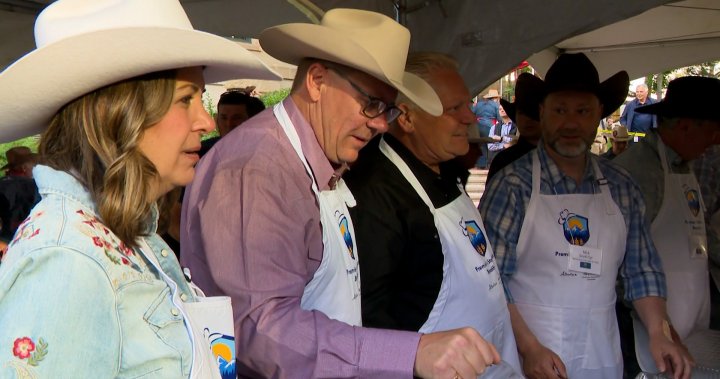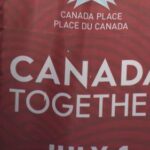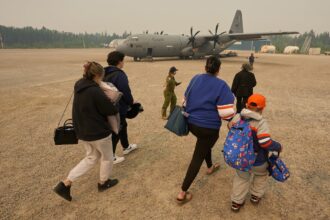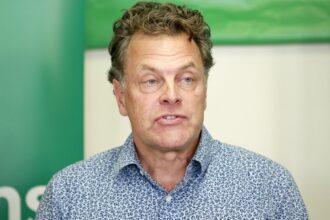The sizzle of pancakes on griddles across Calgary this week isn’t just about breakfast—it’s the unmistakable sound of election season heating up. As the 112th Calgary Stampede kicks into high gear, politicians from across Canada’s political spectrum have descended upon the city, transforming the 10-day festival into an unofficial campaign runway that could shape the next federal election.
Prime Minister Justin Trudeau arrived Saturday morning at a Liberal Party breakfast in northeast Calgary, where he flipped pancakes and pressed flesh with constituents in what has traditionally been Conservative territory. His presence marks a strategic effort to shore up support in Alberta, where his party has struggled to maintain a foothold.
“The Stampede has always been about community, about bringing people together,” Trudeau told attendees while serving breakfast. “That’s what we need more of in Canadian politics today—finding common ground even when we disagree.”
Not to be outdone, Conservative leader Pierre Poilievre made his presence felt at multiple Stampede events, including the Petroleum Club’s annual breakfast, where he delivered sharp criticisms of the Liberal government’s energy policies. Wearing the requisite white cowboy hat, Poilievre promised attendees that a Conservative government would champion Alberta’s oil and gas sector.
“What we’re seeing is a carefully choreographed political ballet,” explains Dr. Melanee Thomas, political scientist at the University of Calgary. “The Stampede provides politicians with a rare opportunity to appear relaxed and accessible while still delivering substantive messages to key constituencies.”
The NDP, led by Jagmeet Singh, and the Green Party have also established presences at various Stampede events, recognizing the festival’s importance as a political touchstone in Western Canada. Singh attended community breakfasts in more diverse neighborhoods, emphasizing the party’s commitment to economic fairness and climate action that doesn’t leave workers behind.
Local politicians are equally active on the circuit. Alberta Premier Danielle Smith hosted her annual Premier’s Stampede Breakfast, using the platform to emphasize provincial autonomy and economic development. Calgary Mayor Jyoti Gondek has also been visible throughout, focusing on urban renewal and post-pandemic recovery efforts for the city.
What makes the Stampede particularly valuable for politicians is its broad demographic appeal. From agricultural producers to urban professionals, the festival draws hundreds of thousands of visitors representing virtually every voting bloc in Western Canada.
“There’s something almost quintessentially Canadian about seeing national figures in jeans and cowboy boots, flipping pancakes,” notes veteran political strategist Janet Brown. “It humanizes them in a way that formal campaign events simply cannot.”
The timing of this year’s Stampede is particularly significant, with a federal election expected within the next 18 months. As party platforms begin to take shape, the messaging tested at Stampede events often provides early indicators of campaign strategies and policy priorities.
Trudeau’s Liberal government, now in its third term and governing with support from the NDP, faces significant challenges across the country—particularly in Alberta, where resource development and environmental policies remain contentious issues. Poilievre’s Conservatives see the province as crucial to their electoral strategy, while the NDP hopes to build on their limited presence in urban centers.
Beyond the photo opportunities and western attire, substantive policy discussions are happening at Stampede-adjacent events. Energy forums, agricultural roundtables, and economic development meetings all feature prominently in politicians’ schedules, providing opportunities for more targeted engagement with industry stakeholders.
As global economic uncertainties and domestic concerns about inflation continue to shape Canadian politics, the conversations happening over pancakes and coffee at the Stampede may prove consequential for the direction of national policy.
The question remaining as politicians don their Stetsons and cowboy boots is whether these carefully managed Stampede appearances will translate into meaningful connections with voters when Canadians next head to the polls. In an era of increasing political polarization, can the spirit of the Stampede—with its emphasis on community and tradition—offer a model for more constructive political engagement across regional and partisan divides?










